Dear Friends and Family,
Last we left you on the primary Ship’s Blog, we had left Panama City, Panama for the Las Perlas Islands of Panama about 30-50 miles off the coast.
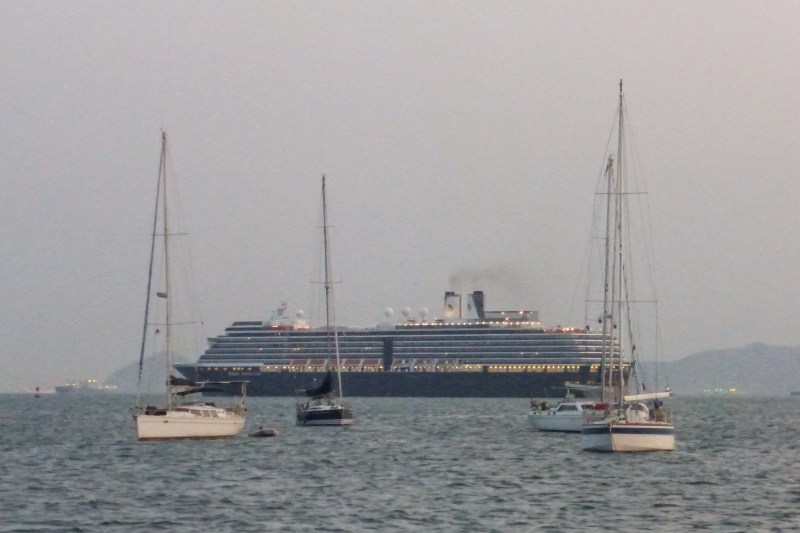
We were still “teething” having to have replaced our main battery system and still having a few generator issues. We finally were able to get off the coast on March 21st and head out to join new friends Shelley and Kyle on s/v “Blowin’ Bubbles”. We first me Shelley and Kyle in Cozumel last season where they were both teaching SCUBA diving for a local resort.
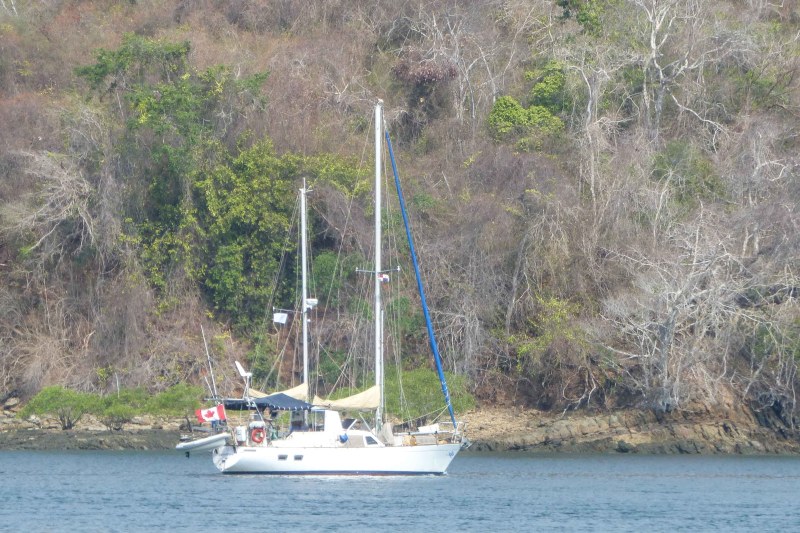
The tides in Panama are the largest we’ve seen all around the world which included one spring tide of 28 feet! The Las Perlas fortunately were only a tame 12-15 feet! There are plenty of places you could anchor at high tide and find yourself in the mud at low tide if you aren’t careful. We joined “Bubbles” at Isla Chapera and finally had a calm anchorage for the first time since we’d left the canal. The anchorage along the Pacific side of the canal is one big wake after another, pretty much all day and night!
Though we didn’t go ashore, we could see the facilities where the television show “Survivor” was filmed some years ago. The facilities are now part of the Panamanian Navy. The next day, we both decided to go over to Isla Cantadora which is the main tourist area for the Las Perlas. We again fortunately found calm anchorage and the four of us went ashore to have a look around and dinner. There is an airfield here and some quite upmarket homes and hotels. The Easter Week crowd would be arriving in a few days so we wanted to be in and out before they got here – jet skis and all, turning the place into a local Miami Beach for the week. The dinner was fine, the company great and we decided we’d head more south the next day to Isla Canas which was an anchorage “Bubbles” had previously been too and enjoyed. A bit tricky getting into and out of anywhere down here with fast moving currents and fairly extreme tides. Kyle had waypoints from his first visit and his extensive study of the local guidebooks was a great asset. Thank You Kyle!
The cove was calm and we took a long dinghy ride ashore to the cove where the locals lived at “Ensenada”. We enjoyed a brief walk around the very small village and asked a bit about the local pearl diving (Nikki always loves a pearl!) and finally returned to the boats for a lovely evening. Friends Chuck and Linda from “Jacaranda” had written some really thorough blogs on this area and they were quite helpful as well.
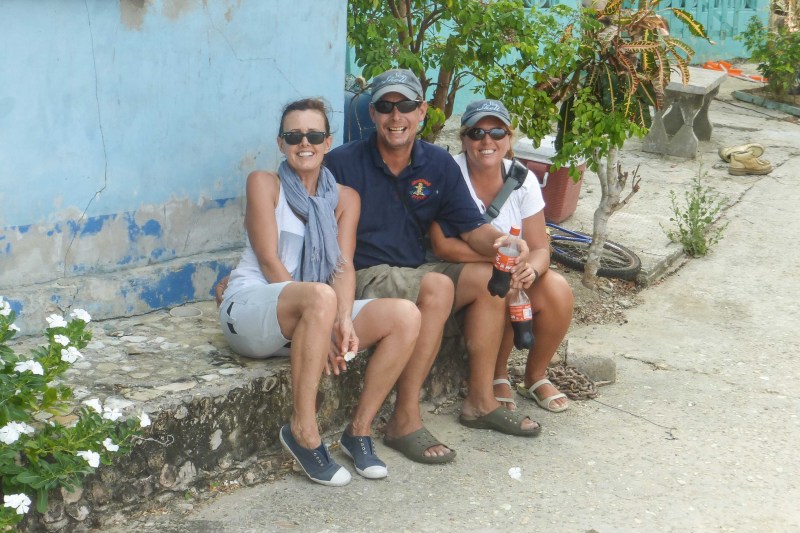
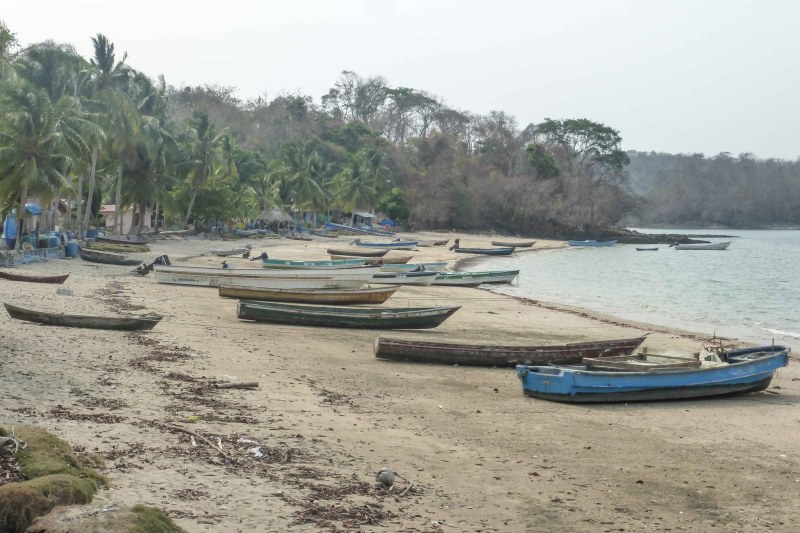
Kyle, Sheley and Nikki went for a nice hike the next day while I again had to wrestle with the generator. This is where our satellite phone really saved us, as I was able to call the US representative in Houston who helped me troubleshoot the issue. Turns out that one of our electrical connections, though intact, was still loose. We accidently discovered this while doing tests with our volt/ohm meter under the direction of Robert Conner from AER in Houston. Thank You Robert!
The next day, we said our goodbyes and Shelley and Kyle headed north to meet their old employers from Cozumel and would head back to Panama City to provision and pick up a friend for their very, very long planned sail from Panama City to the Marquesas! This is about 4000 miles and will most likely take them around a month. “Bubbles”, like many boats this season have been put off by the outrageous fees the Galapagos Islands are getting. When I was there last in 2009 with Cindy, the total fees were about 350.00 USD. Now, they will be 1450.00 USD. The truth is, the Galapagos really doesn’t want small boats at all.
They want us to fly in, stay in a hotel, take a cruise, etc. More on this in the next blog! Approximately 50% of the boats this season are skipping the Galapagos due to costs.
As “Bubbles” headed north, we headed south around noon on the 28th of March and wanted to take a look at the wreck of the world’s first commercial submarine. For more information on this fascinating relic, see the following link: Submarine Explorer
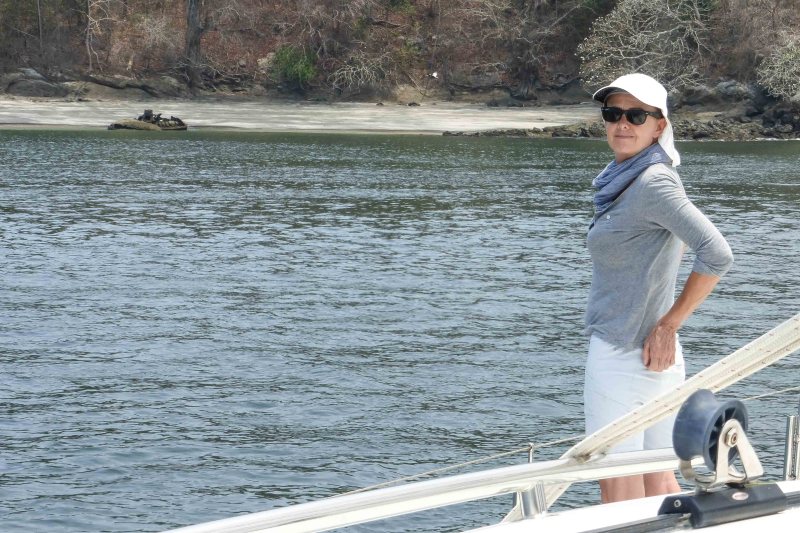
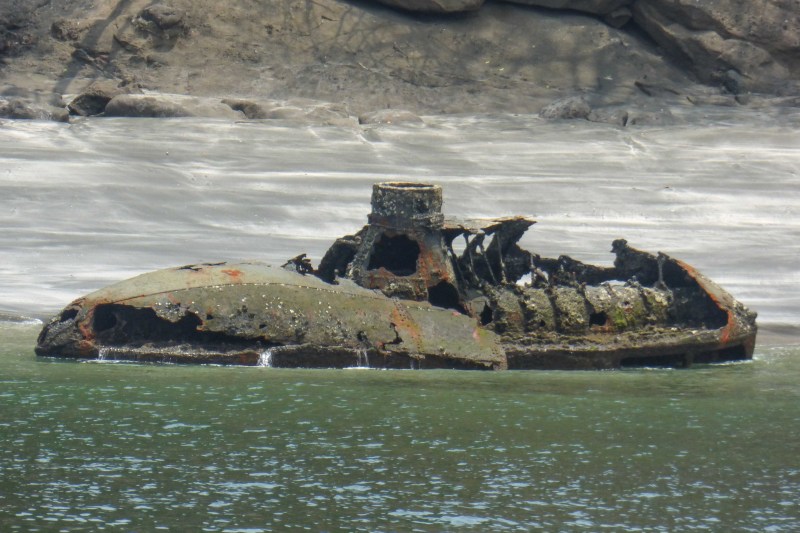
The submarine was used in the Las Perlas in the mid 1800’s to harvest the local pearls. Decompression sickness was then unknown (and It’s cause) and after several incidents, the submarine was abandoned on Isla Telmo in 1869. The wreck is visible at low tide and was believed by locals to be a Japanese Submarine that washed ashore in WW2. This of course was well before you could “JFGI” it!…:-)))
We wanted to keep moving, as we’d be at sea for the next 5 days or so. As such, we mostly did a “drive by” and took some photos. The tide was right, but the current was indeed starting to really move, so off we went.
Our first night, we did get to sail and received an email by long distance sailing friend, Jeanne Socrates, to avoid “Mother Ships” which in the past had a bit of a nasty reputation for playing pirate. We hadn’t heard of any issues on the Pacific side, but did stay clear of the one and only large fishing vessel we saw on night one.
The good news is, the Pacific isn’t “Pirate Country” once away from the coast of the America’s and even then, quite rare.
The next two days was generally calm and we alternated between motoring and sailing when the winds were cooperative. The Gulf of Panama is at the far Eastern end of the Pacific Ocean’s Inter Tropical Convergence Zone and as such is a notorious “wind hole”. This is where the North and South Pacific Trade winds converge and is often humid, hot, rainy and squally. For reasons unknown, we haven’t seen a drop of rain in weeks and this continued all the way to the Galapagos.
As we completed our second day, we tried to stop at the far-flung and rarely visited, Columbian Island of Malpelo. Malpelo is a national park and the reviews about getting to stop here were mixed. Technically, you need a permit from the Columbian Park Service and there is only one mooring that can be used. The island is so steep at the shore (everything is straight up) that even 100 feet from the island it’s too deep to anchor. Depths are mostly 150 feet or more right off “the beach”. Despite the winds being calm, the long rolling swell would make short work of any vessel that “tapped” up against the island. We knew were not likely to get to stop when we saw the 150 foot supply vessel on the mooring. We hailed and asked, but they said no way. The island looked like King Kong could have lived there with it’s stark steep sides (no jungle…:-).
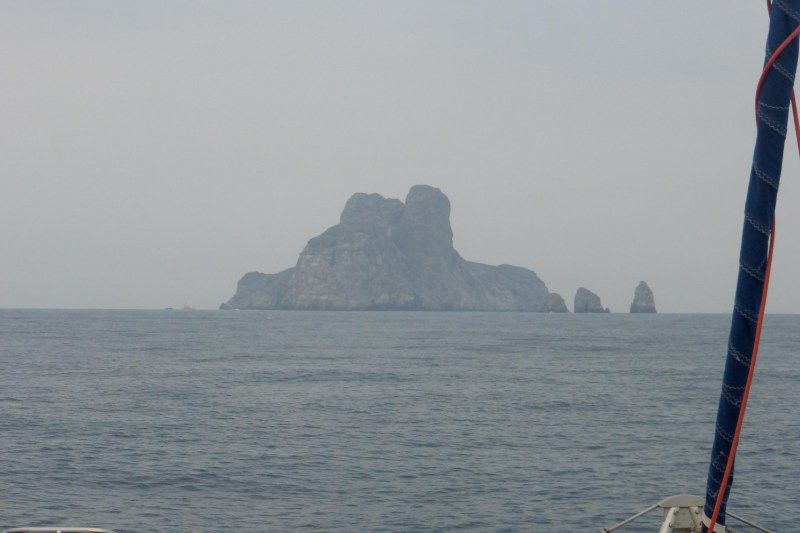
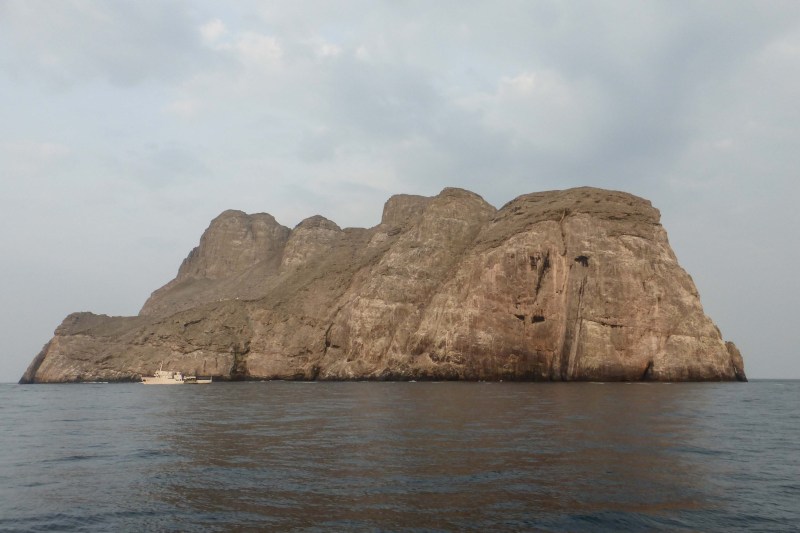
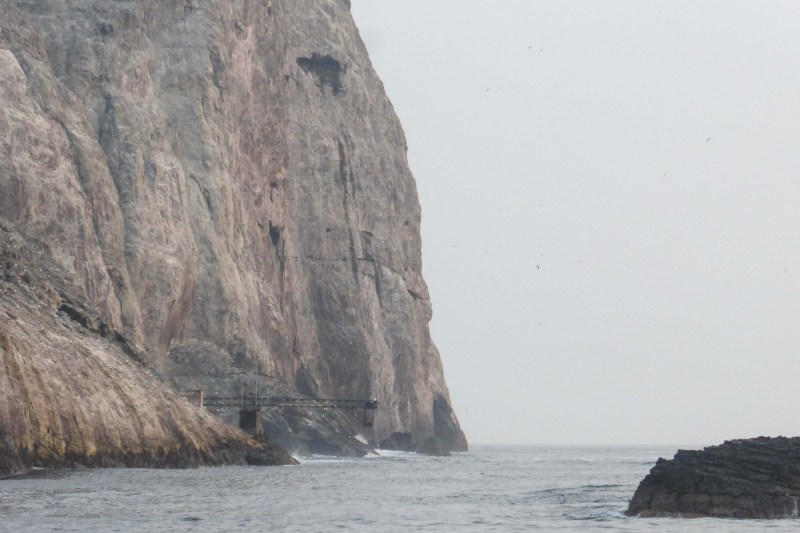
This island is a “big animal” shark divers/manta ray/whale shark paradise. When the dive boats come out, they stay on the one mooring and take their guests to one of the approximately 10 offshore pinnacles here that are right next to the island. The Hammerhead and Galapagos Shark sightings are apparently nonstop and in certain seasons, silky sharks and many other species too. The area is pristine, the water clarity amazing which is in direct contrast to the West Coast of Panama.
The Park Rangers are here for a good reason too. Some years back, factory fishing vessels came in and one event “finned” over 2000 sharks.
The Rangers have no boat, but keep watch and would report any illegal taking of sharks to the government. From there, I have no idea how they could track down the perpetrators unless they went into Columbian waters.
As we were denied entry, we decided to just take a quick sail completely around the island. The island is only 3/4ths of a mile long and perhaps 1/4th of a mile wide. This was pretty cool and quite interesting.
We saw the Park Rangers in their house way up on the hill and could just imagine the hike! They waved, so did we.

It’s a rare place to visit or even get to see, so we still enjoyed the experience despite the fact we couldn’t stop.
We had about three more days to go to cover the 875 nautical miles from Panama to The Galapagos, so off we went. The biggest feature of the trip was how calm it was and how many Panama Canal inbound and outbound vessels we encountered. In two cases, we were on virtual collision courses.
The strangest vessel we saw was our last day at sea, m/v “Galea” – a 975 foot LPG ship. The 10 tanks are full of extremely cold liquefied petroleum gas. These ships are safe as the fuel is so cold, but you do indeed want to make sure the refrigeration equipment is working well.
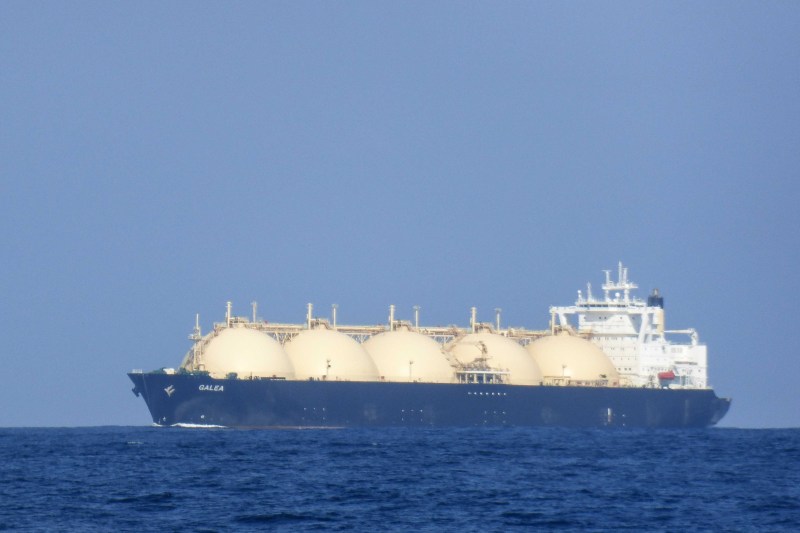
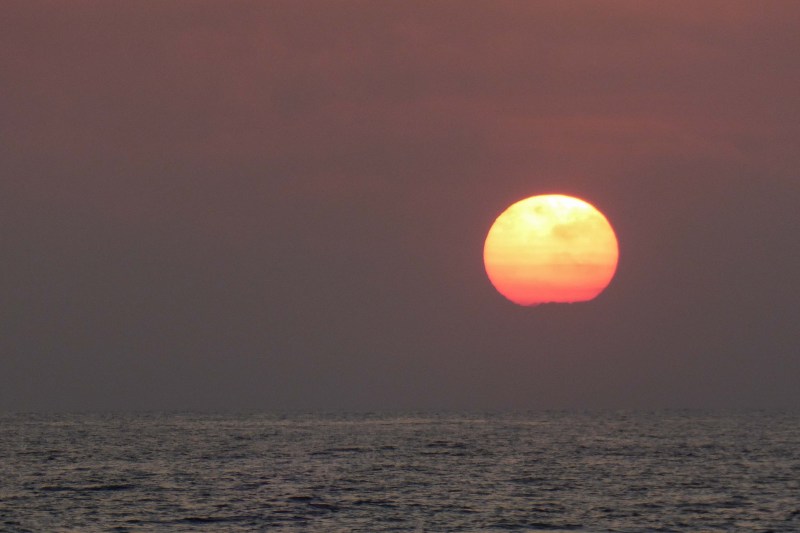
We arrived in the Galapagos on April 2nd, 2016.
This is where by any and all metrics; “Beach House” had completed her circumnavigation. More on that in the next Ship’s Blog which will be posted within the next few days…..
Keep in touch,
Scott and Nikki – now in Wreck Bay – San Cristobal Island, The Galapagos.